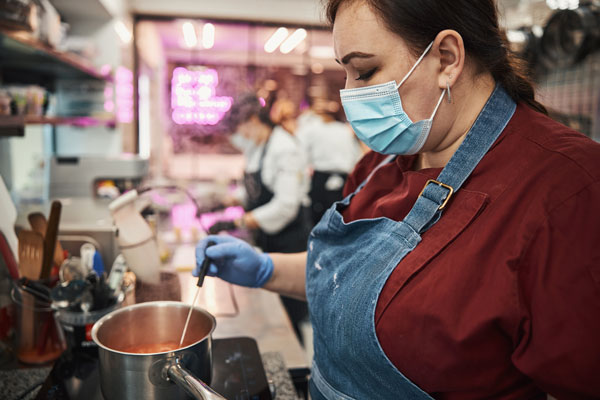Getting Your Playbook for Food Safety Organized
As anyone who has ever worked in a foodservice operation knows, from the time food is received in your establishment to the time it is served to your customers, following proper food safety practices is crucial. What many don’t often think about is this time really should extend from the time the manager places their orders with their suppliers (including which purveyors you utilize), through the time the food is consumed – even if that consumption occurs off your premises and days after the original order was picked up by the guest. This is something that has certainly been highlighted by the pandemic as customers across the nation are utilizing take-out, curbside to go, and third-party delivery options more so now than ever before.
Last month, we discussed the importance of a basic written infrastructure related to food safety, including standard operating procedures, written communication, and logs. While other priorities may have taken precedent over the last 11 months, as the new year gets into full-swing, have you ever stepped back to look at your entire food safety program and all it encompasses? Is your food safety playbook updated and in order?
While we could debate the legal liability and responsibility for food consumed off-site should a foodborne illness occur, if news of any illness resulting from food served in your establishment reaches the media, the negative consequences are unmistakable.
Over the course of the last year, your food safety system has changed. Maybe you did not write down what those changes were, but what you do to ensure food safety has certainly changed to accommodate the new systems that you established to operate your businesses during the pandemic and the increased demand for food to-go. Whether you took the time to develop new standard operating procedures, reevaluated hazards, established new preventative controls, or updated how you monitored and developed corrective actions, changes were sure to have happened.
If you haven’t explored what safety measures you need to include in your standard operating procedures for food that is taken for consumption off-site, visit with your team about your system and develop these protocols now. Be sure to develop information that can be given to your guests on proper holding and storage of food and how to reheat the food properly. While we could debate the legal liability and responsibility for food consumed off-site should a foodborne illness occur, if news of any illness resulting from food served in your establishment reaches the media, the negative consequences are unmistakable.
Take the time now to pull all this information together. Having one repository of all information – printed or digital – helps access the information you need, when you need it. Moreover, as we emerge from the pandemic and the recovery begins to our economy and our industry, you have the formal, written systems in place to help bring on and train new staff.
If it seems too dauting and cumbersome to pull all of this together, bring in your supervisors and staff to assist – remember, food safety is a team sport. As we discussed in our January webinar, Decision Making in Uncertain Times: Considering the ROI on Food Safety, a small investment now can pay off greatly in the end. After all, the teams that will be playing in the Super Bowl next weekend, didn’t show up without a game plan. They made it to the big game by being focused, well-organized, with each player being mindful of how their performance impacted the overall team. Risk Nothing!
READ MORE POSTS
Food Traceability in Foodservice Operations: An Essential, and Soon-to-be Required, Component of your Food Safety Plan
In June, I discussed the importance of having a solid food defense plan, and I provided you some resources for developing or strengthening your food defense plan. As I was writing those blogs, my mind kept turning toward food traceability. While they are distinctly different concepts, food traceability goes hand-in-hand with a food defense program. I would argue for your food defense plan to be effective, you must have an effective internal food traceability program, where you can trace the product back to the supplier (backward traceability), but also be able to trace the product from the supplier to the guest who was served the product (forward traceability).
Food Defense Plan Resources – at just the right price…
Earlier in the month, I discussed the importance of having a solid food defense plan in place for your foodservice operation. Even if the first version of your plan is not perfect, it is a start. Having plans down on paper will force you to think through the process and ensure the vulnerable points where opportunities exist for possible contamination within the operation are mitigated.
Don’t Turn a Blind Eye to Your Food Defense Practices
Late last week, as I mindlessly scrolled through Twitter, I ran across a Tweet suggesting the #IceCreamChallenge from summer 2019 was the real cause of the Coronavirus spread. Of course, the Tweet was made tongue in cheek, but it did cause me to reflect on that challenge, which had a short life on social media in the summer of 2019.
Salmonella and Listeria monocytogenes: Serious Threats to the Safety of Food
Earlier in the month, I mentioned the top microbial enemies we all face in foodservice operations, E. coli, Campylobacter, Salmonella, and Listeria monocytogenes. While we discussed E. coli and Campylobacter, we did not get around to discussing Salmonella or Listeria monocytogenes.










